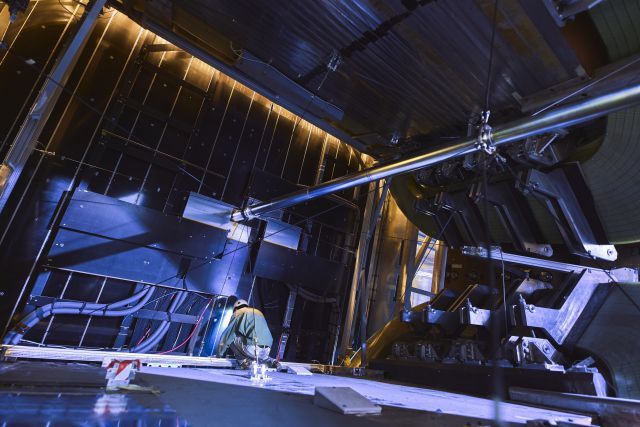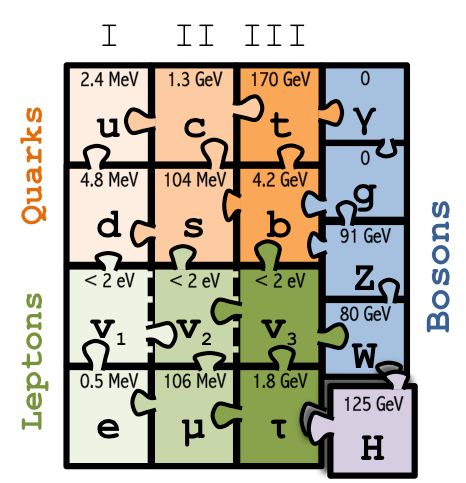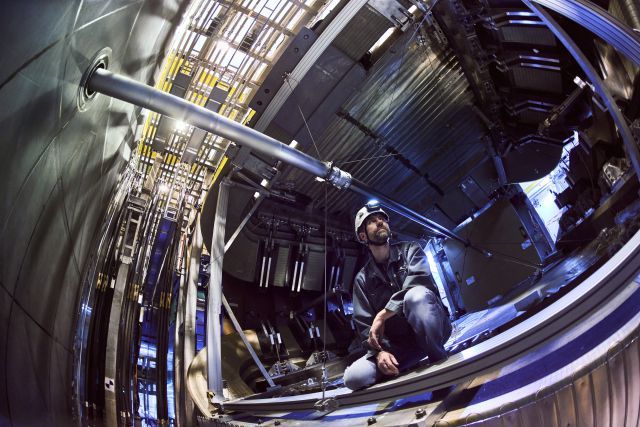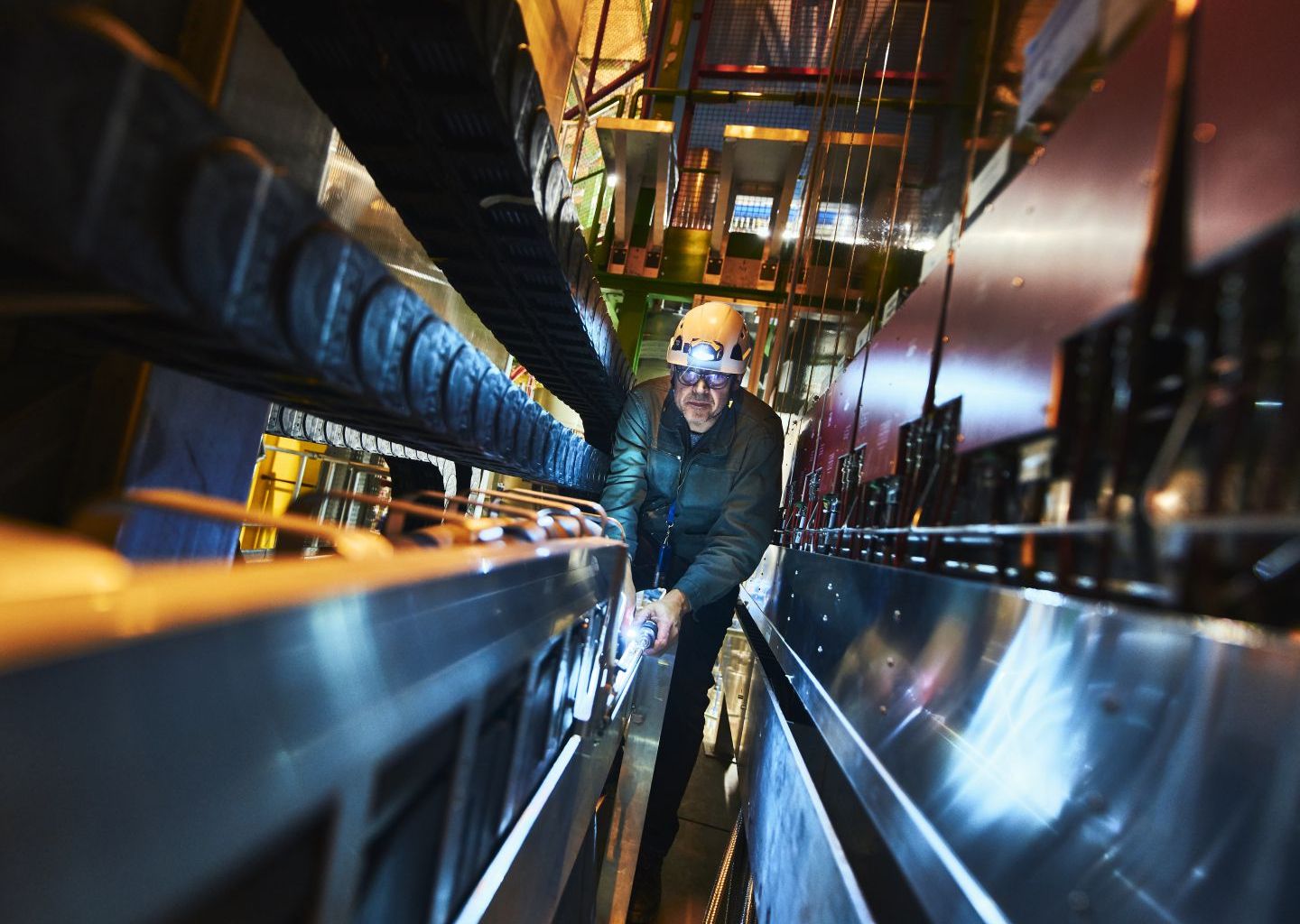Recent Results from LHCb Challenge Leading Theory in Physics
The LHCb collaboration has just released new exciting results that strengthen hints for deviation with respect to the theoretical expectations. Members of the group at the University of Zurich led by Prof. Nicola Serra were part of the small team of researchers that worked directly on the measurement. The result was presented for the first time Tuesday, March 23, simultaneously at the 55th Rencontres de Moriond conference [1] and at a dedicated LHC seminar at CERN [2], followed by a CERN press release [3].
Swiss Particle Physics researchers are very proud to announce that UZH people worked directly on this measurement and had a leading role on this analysis, EPFL and UZH are very prominent in LHCb in both analysis and hardware.
![Comparison between RK measurements. The measurements by the BaBar and Belle collaborations combine B+→K+ℓ+ℓ− and B0→KS0ℓ+ℓ− decays, where ℓ is a lepton. The previous LHCb measurements and the new result [4], which supersedes them, are also shown. Comparison between RK measurements. The measurements by the BaBar and Belle collaborations combine B+→K+ℓ+ℓ− and B0→KS0ℓ+ℓ− decays, where ℓ is a lepton. The previous LHCb measurements and the new result [4], which supersedes them, are also shown.](http://portal-cdn.scnat.ch/asset/40d25219-cf32-5d7f-a344-d4356ccc9252/Screenshot%202021-03-23%20at%2007.10.12.png?b=7f50075d-36d9-5913-bc44-fac8e7e34457&v=9bd7e834-a6a8-55b6-a09e-b7a43d64781f_100&s=ZXCr4RK3qEJY7uCaZs-9pRZZZ8OZ8EVj3Rtyhyf2-qP-evQun65d57tCLxGqXtaTEoil2Qpqb3qILXWzeagdRAk0VyPfdvD6i55sqpj1txNkByqDDgqtsu4QPc8YaVnoTVyp_QF8cXZ9TucqIpINFjwWWfLF-52KvErWu9a54Gs&t=fc13185f-cc70-4eb1-86f2-ea80914407bc&sc=2)
The measurement compares beauty meson decays to a K meson and a pair of electrons with those having a pair of muons instead. A muon is an elementary particle which is identical to an electron apart from its mass, which is about 200 times larger. The Standard Model of particle physics treats electrons, muons, and the even heavier tau leptons in the same way, except for differences due to their masses. This property of the Standard Model is called lepton (e, μ, τ) universality. Since the b quark is heavy compared to electrons and muons, it is expected to decay with the same rate to these two lepton types, and the ratio, called RK, between the two decay probabilities is predicted to be equal to one. In the updated analysis, which uses all the data collected by the LHCb detector so far, this ratio was measured with much higher precision compared to previous results. The new result deviates from one with a statistical significance of 3.1 standard deviations, hence indicates evidence for violation of the lepton universality in beauty meson decays. This corresponds to a probability of about 0.1% that the data are compatible with the Standard Model expectation. Lepton universality violation would imply physics beyond the Standard Model such as a new fundamental force in addition to the known gravitational, electromagnetic, weak and strong interactions. However, more data and complementary measurements are needed to confirm this result, which adds caution to the excitement of researchers.
The LHCb experiment is one of the four large experiments at the Large Hadron Collider (LHC) at CERN in Geneva. The LHCb experiment is specifically designed to study decays of particles containing a heavy beauty or a charm quark. The resulting precision measurements of matterantimatter differences and rare decays of particles containing a beauty quark allow sensitive tests of the Standard Model of particle physics. Rather than flying out in all directions, beauty quarks that are created in the collisions of the proton beams at LHC stay close to the beam pipe. This is reflected in the design of the detector, which gives LHCb the unique opportunity to measure important parameters of the Standard -Model in a so far unexplored region.
LHCb has a strong Swiss contribution with groups from the University of Zurich and the EPFL.
Professor Emeritus Tatsuya Nakada from EPFL has been the first spokesperson of the LHCb collaboration for 14 years encompassing detector design, development, construction and commissioning leading to the first data taking in 2009. The groups of EPFL and UZH have made key contributions to the design, construction and operation of the LHCb detector, as well as to the detector upgrades. These will bring the experiment to the next level of precision and exploit its data to search for physics beyond the Standard Model. New tracking stations, based on scintillating fibre technology (SciFi) or silicon sensors will be at the core of the new LHCb detector set out to record data at a rate five times higher than previously, already in 2022. Such high volume of data is indispensable to confirm or disprove the hints of possible lepton flavour violation with certainty. The EPFL has built and tested crucial parts of SciFi while UZH is strongly involved in the upgraded silicon tracking detector
Since the start of data taking in 2009 the group of Nicola Serra has played a leading role in measurements of decays of particles containing beauty quarks. The measurement shortly described above is the latest of a set of consistent deviations from the predictions observed in decays of beauty quarks. Swiss researchers are at the forefront of many of these measurements. Switzerland is in an exceptional position of not only having a strong group leading the measurements of rare b decays but having a theory group led by Professor Gino Isidori working on the theoretical description of these decays. His group deals with some of the most interesting open questions about the nature of basic constituents of matter and their fundamental interactions, closely connected to the research questions of the LHCb experiment. A close and fruitful collaboration occurs also with Prof. Andreas Crivellin, based at PSI. His group is deeply involved in understanding the possible implications of these results for other experiments. This close collaboration of theory and experiment allows researchers in Switzerland to be at the frontier of current research in particle physics. In particle physics, the gold standard for discovery is five standard deviations, corresponding to a probability of less than 0.00003%, and so it is too early to draw a final conclusion. However, this deviation agrees with a pattern of anomalies which have manifested themselves over the last decade. Fortunately LHCb is well placed to clarify the potential existence of new physics effects in these decays, with many related measurements in the future.
[1] Talk in Moriond: http://moriond.in2p3.fr/2021/EW/
[2] CERN seminar: https://indico.cern.ch/event/976688/
[3] LHCb public result: https://lhcb-public.web.cern.ch/RK2021/
[4] LHCb preprint: https://arxiv.org/abs/2103.11769
University Zurich Press Release link
For more details and explanations:
Searching for Clues of Rare Events: link video
How Particle Physics Works: link video
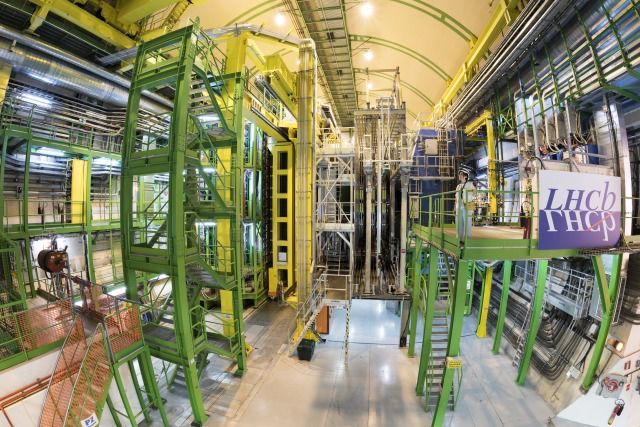
Downloads/Links
- LHCb experiment (CERN)
- LHCb preprint (March 2021)
- UZH - Gino Isidori Outreach
- Universität Zürich, Physik-Institut, Forschung
- EPF Lausanne, Institute of Physics, research
- LHCb website RK
- EPFL - The SciFi Tracker
- Test of lepton universality with B0 → K∗0l+l− decays (2017 paper)
- Searching for Clues of Rare Events - N. Serra (UZH)
- How Particle Physics Works - CHIPP Physicists
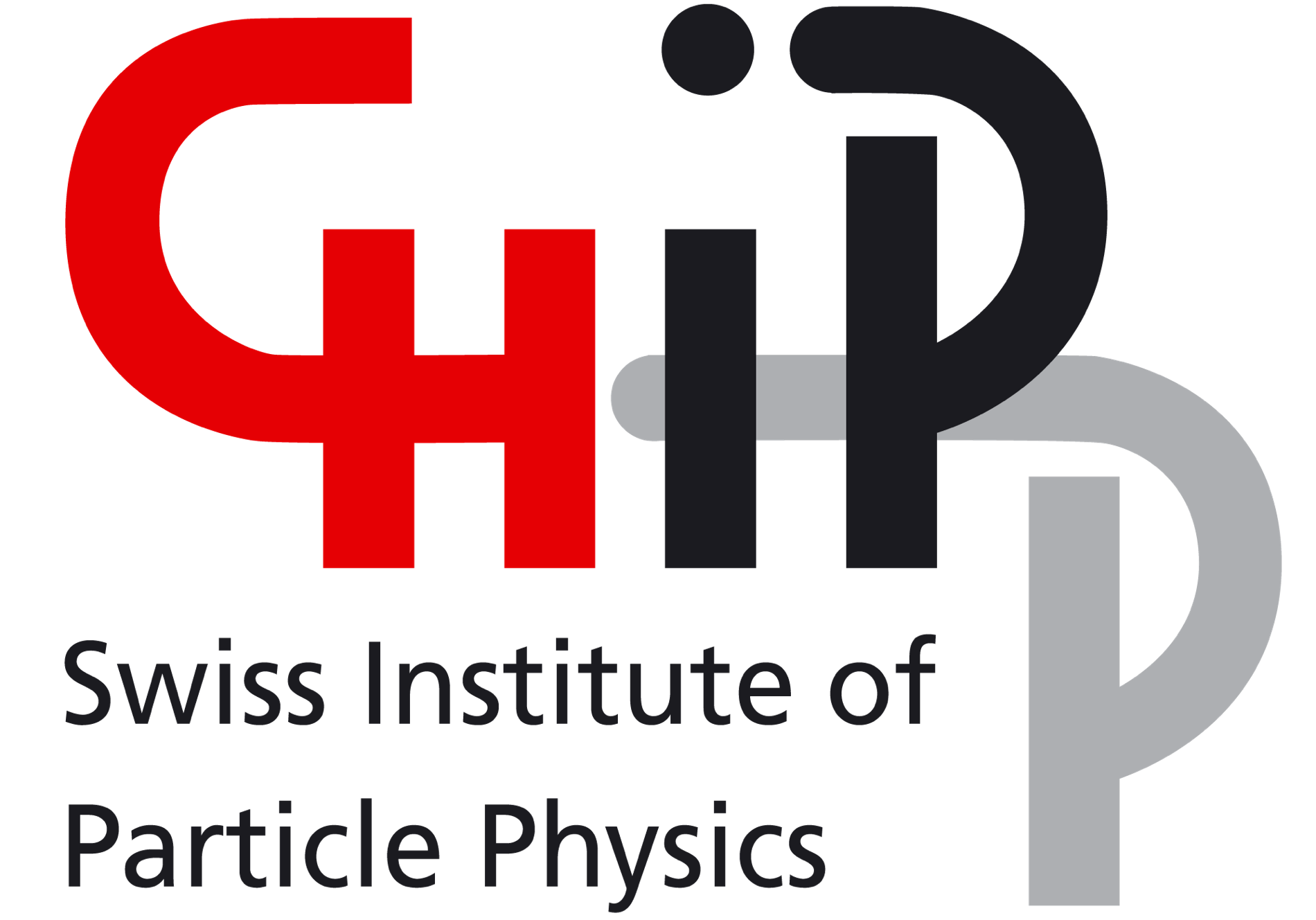

![Comparison between RK measurements. The measurements by the BaBar and Belle collaborations combine B+→K+ℓ+ℓ− and B0→KS0ℓ+ℓ− decays, where ℓ is a lepton. The previous LHCb measurements and the new result [4], which supersedes them, are also shown. Comparison between RK measurements. The measurements by the BaBar and Belle collaborations combine B+→K+ℓ+ℓ− and B0→KS0ℓ+ℓ− decays, where ℓ is a lepton. The previous LHCb measurements and the new result [4], which supersedes them, are also shown.](http://portal-cdn.scnat.ch/asset/40d25219-cf32-5d7f-a344-d4356ccc9252/Screenshot%202021-03-23%20at%2007.10.12.png?b=7f50075d-36d9-5913-bc44-fac8e7e34457&v=9bd7e834-a6a8-55b6-a09e-b7a43d64781f_100&s=ZXCr4RK3qEJY7uCaZs-9pRZZZ8OZ8EVj3Rtyhyf2-qP-evQun65d57tCLxGqXtaTEoil2Qpqb3qILXWzeagdRAk0VyPfdvD6i55sqpj1txNkByqDDgqtsu4QPc8YaVnoTVyp_QF8cXZ9TucqIpINFjwWWfLF-52KvErWu9a54Gs&t=2f78dd92-7a22-4f43-a0bf-8326ef689cea&sc=2)
